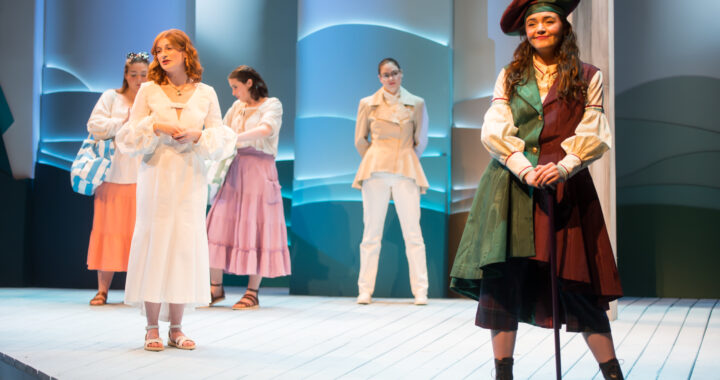‘Game of Thrones’ delves deeper into characterization of new and old
3 min read
Creative Commons
By ALISON THOET
The swelling music, the rising towers and the house symbols branded against swords: the introduction to “Game of Thrones” never gets old.
Fans are immediately clued into the new season’s themes at the start of the premiere, which aired this past Sunday. The show opened with memories of last season still branded in the audience’s minds: Daenerys locking away her “children” and their desperate screams, and the bloodshot eyes and bulging veins that told us Joffrey Baratheon, every viewer’s nemesis, is finally dead.
This season opens with feet traversing a dark, haunting forest. The pertinent face with its prideful and calculating look clue us in that this is a young Cersei. She seeks out a witch to tell her future, a clear sign that something big is in store for Cersei this season.
We jump to adult Cersei, severe and cold in her mourning clothes as she visits her dead father, who was killed by Tyrion.
Cersei’s past keeps coming to bite back at her in this episode, as Lancel, another family member/lover, insinuates his part in the death (murder?) of King Baratheon. Dangerous secrets keep popping up, and Cersei will do whatever she can to keep up the lies and pretenses her life is built on, hiding behind her smirks and pride through it all.
Enter Tyrion: rolling out of a crate, covered in filth and ready to vomit. He and Varys are in a new world together, and while Tyrion is drinking out of a never-ending bottle to wash away the guilt of murdering his father, Varys is recruiting him to find the right person to place on the throne.
The screen is taken over by a winged, golden statue pulled to the ground and felled to pieces as it falls from its precipice on top of the pyramid. It is white gold that will replace the harpy, the white gold of the Targaryen queen.
“I’m not a politician, I’m a queen,” Dany states and shows with her unmoving and unfeeling, yet ever beautiful mask.
And yet, the “Mother of Dragons” is faltering and is scared of her dragons, who push her out of their newfound prison with their cries and fire.
From the heat of the south to the cold northern winter, we see that Jon Snow’s lost love left some holes as he continues his work in training the future of the last line of men.
Melisandre and Stannis, with their rather unusual love for fire, gave Mance Raydar, the “King Beyond the Wall,” an ultimatum: bend the knee or burn to death. Of course, he chooses the latter, but as a last middle finger to Stannis before the credits roll, Jon shoots an arrow into the heart of the burning would-be king.
This episode seems to give a lot of focus to the Unsullied and the wildlings, both unwanted groups of people treated as slaves, but also people who will give unflinching support to those who earn it. Mance dies in order to protect his people from fighting a “foreigner’s war” in an effort to give the voiceless some agency.
Often one seen lacking in agency, Sansa Stark has begun to move herself around the board and watch other players in the game. Also on the periphery are Podrick Payne and Brienne of Tarth, who unknowingly stand by as Sansa, their “damsel in distress,” slips past in a carriage, a rather ironic scene in the episode.
Next week’s episode promises sand snakes, more depth to the golden, though increasingly worn, Cersei and Arya at a new job. This season began well and started diving into plotlines and characters that will even interest viewers with previous knowledge of the plots of various tomes.











